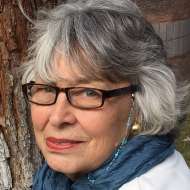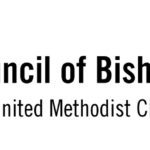As I write it is Epiphany, January 6. It is the day to celebrate the gifts of the Magi and their commitment to the long slow journey in search of the Messiah.
It’s also the day people officially begin to take down the ‘boughs of holly’ that have ‘decked the halls.’ This is the week most of our churches will ‘un-hang’ the greens, and for a few days our sanctuaries and our homes will feel very empty and stark.
This year I had a nice tree in my small apartment, and today I will begin to pack away the baubles and lights, and return the tree to its box. In order to have the tree I had to re-arrange the living room furniture. Unexpectedly I have decided I like the new arrangement and think I’ll keep it. But what to do with the empty space occupied for a month by the tree? And with the greenery gone, the mantle looks bare and cold. I like to think I will keep the Christmas Spirit in my heart all year, but I will certainly miss the warm rich texture in my home of the seasonal decorations.
For the moment, though, I kind of like the extra space, and feeling of openness, freshness, and light. It has cleared my view out my front windows and on to the mountains beyond. And it feels very freeing.
During my education I studied art some, and learned about the concept of positive and negative space. The positive spaces are the tangible things I can see and feel, while negative space is everything that surrounds the positive. How I look at the empty space in my home depends on my perspective. For at least a month I will enjoy the clean lines, and uncluttered feel, and I will focus gratefully on the open space.
Sarah Ban Breathnach, in her book Simple Abundance, shares that “in the Japanese culture, the negative spaces in art, philosophy, religion, design, business, and life are not thought of as empty but as rather ‘full of nothing.’ I consider that the empty space in my home could be considered full…of possibilities. It’s only when I have that emptiness that I can consider adding something. And it strikes me that this is true also in my daily schedule. I can only commit to new spiritual practices when I have created some empty time and space by putting something else aside.
On our recent trips around the district, DS Dan has handed out blank pieces of paper. He considers them ‘pages of greatest potential.’ On those blank sheets he encourages church members to record their thoughts, reflections, fears, and dreams for their local church. Nothing is considered too grand a vision or too small a thought. The most compassionate of ministries might be outlined on that paper, or lists made of those who need the church’s help the most. Songs of praise or quiet prayers could also be composed and recorded there. It’s a chance to see what the possibilities are for each person, what their commitment might produce. But for a moment I love the blank sheet, the understanding that with a dream born of God anything might be possible. My heart can soar as I ask for the clarity to see the dreams He has for each church member, and for me.
I encourage all of us at this time of year to take advantage of the openness and emptiness of the season following Christmas. To take a deep breath and imagine how this year will be different because of the space that was occupied in our lives by the story of the coming of the Christ Child. Once the nativity set is put away, how will it’s meaning continue to fill our lives, our homes and our churches? My view from my living room has changed; I pray that my view from my heart has been changed as well.
2020 is currently a blank sheet of endless possibilities and greatest potential of ways to bring glory to the name of our Lord.






